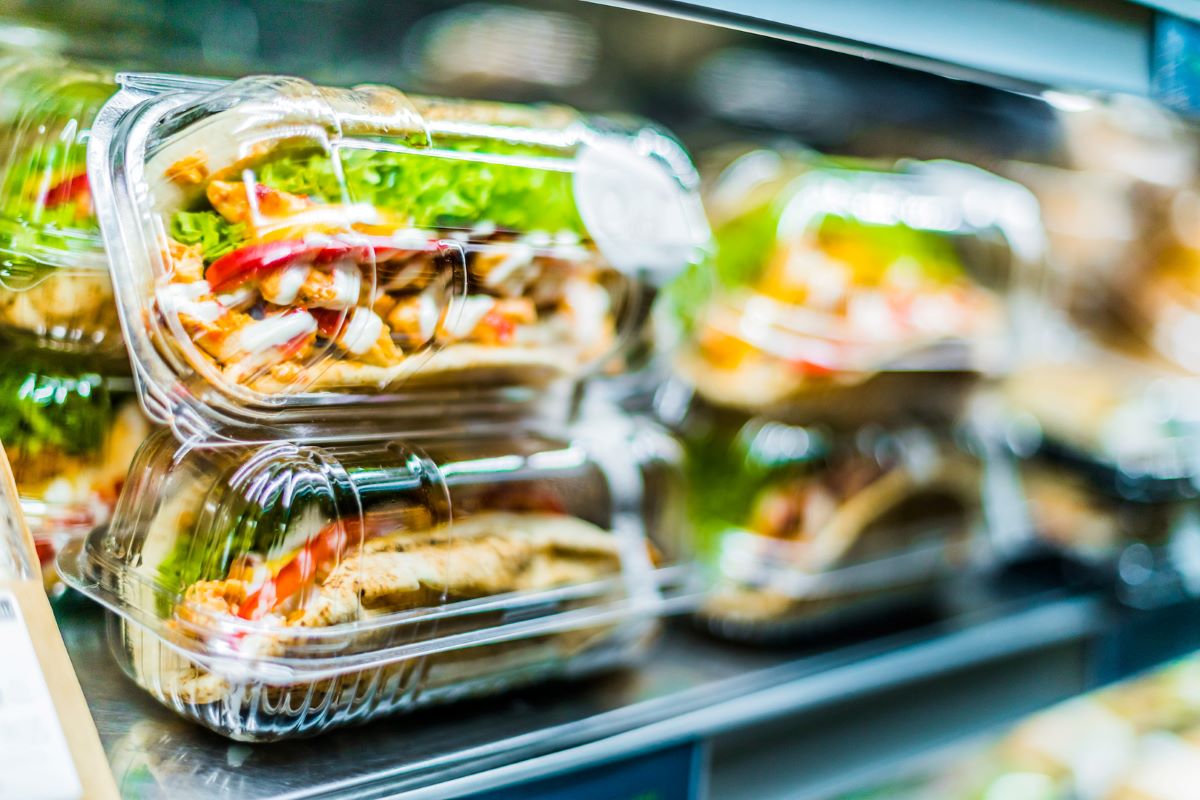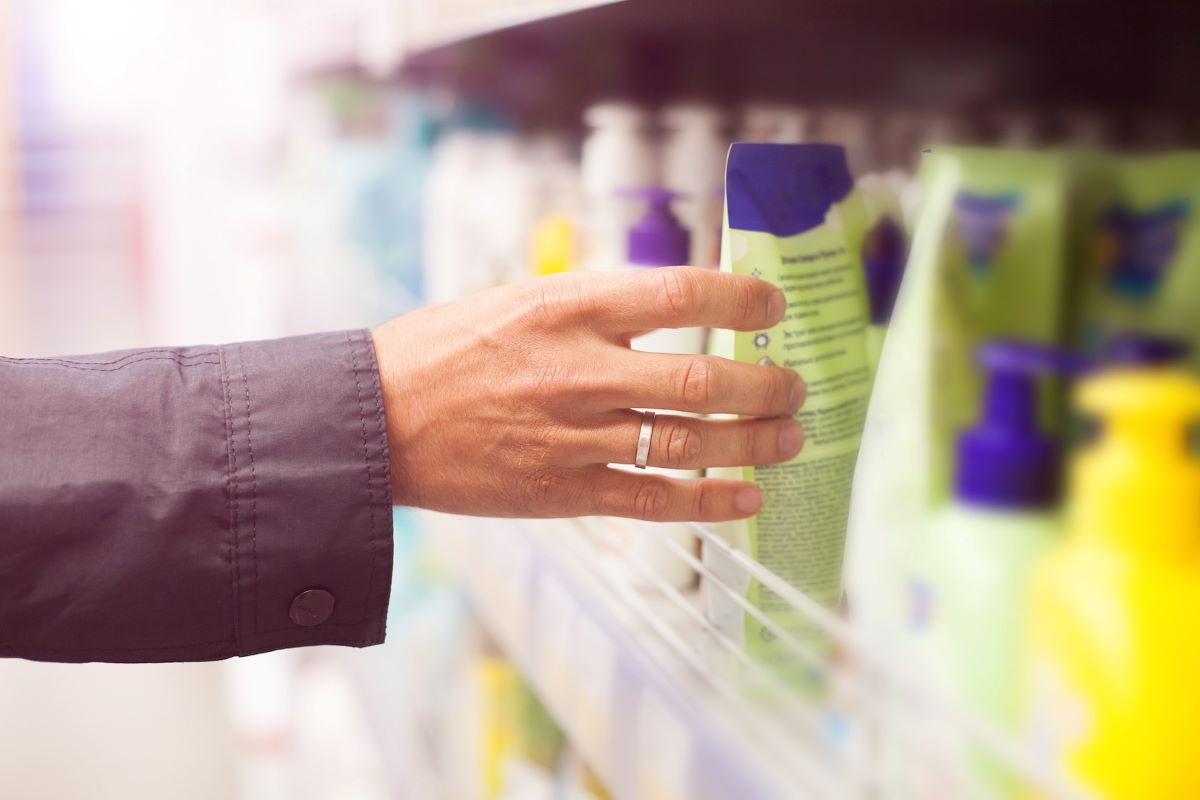.jpg)
Basic knowledge packaging: between product safety and marketing - What is primary packaging?
- Primary packaging is sales packaging with direct contact to the product - this means high requirements.
- With a wide variety of packaging materials, primary packaging offers optimum protection for goods from diverse industries.
- As sales packaging, however, they perform even more and also take on important marketing functions.

There are many types of packaging and they are very different. This applies not only to the variety of shapes and materials - but above all to their respective intended use. In logistics, a fundamental distinction is therefore made between primary, secondary and tertiary packaging. We explain what primary packaging is and what special requirements it has to fulfil.
Primary packaging - an attempt at a definition
According to the experts at the Fraunhofer Institute for Material Flow and Logistics IML, primary packaging is "packaging that is regarded by the consumer as a sales unit". It is therefore sales packaging: consumers can use it to safely transport the products they have bought home or to store the goods accordingly.
Even this brief description shows that primary packaging is an extremely demanding packaging product. After all, it takes responsibility for the packaged goods and their integrity. At the same time, it is aimed at the customer and is therefore much more than a simple protective cover. In fact, it usually fulfils various tasks - and often has to take into account vital specifications.
Primary packaging and its range of tasks
Ultimately, all requirements for primary packaging - material properties, material selection, shape and (external) design - are derived from its direct contact with the respective product. This is also the fundamental difference to secondary packaging. Although these are intended as outer packaging for similar tasks (especially with regard to the protective function), they do not come into contact with the products.
Task #1: The product must be safe
Because primary packaging is so close to the product, the most important task is: the contents must be safe. It is important to isolate and protect the packaged product as well as possible so that its specific properties are retained. And this from the moment of packaging until final consumption.
For this purpose, the primary packaging must in turn have the appropriate properties. This is primarily a question of material selection. It is adapted to the requirements of the packaged goods, in several respects:
- The packaging material protects the product from external influences, from moisture, dirt and oxygen to mechanical stresses during storage or transport.
- Conversely, the product or certain ingredients should not pass through the barrier layer to the outside. Solvents are one of many classic examples of this.
- Interactions between packaging and product must be avoided. This is because the packaging material must not release any particles or substances into the packaged product. Additives such as plasticisers, stabilisers, dyes etc. must be prevented from migrating into the packaged product.
Which material is best suited for primary packaging always depends on the product in question. The requirements differ quite considerably in this respect.

Task #2: The product must be promoted
Primary packaging not only maintains close contact with the product, but also with the customer. Fraunhofer IML's brief definition has already pointed to the function as sales packaging, because that is how consumers perceive it.
The prerequisite for this is again: packaging that stands out. This is especially true in retail, where the competition at the point of sale is large and diverse. Good primary packaging manages to attract the customer's attention by
- appealing to the target group with an appropriate design,
- putting the attractiveness of the product in the foreground and
- offering a recognition value for the brand.
This area of responsibility, therefore, encompasses marketing and branding in equal measure. In this context, the design of the primary packaging not only influences the individual purchase decision. It also contributes to brand trust and customer loyalty in the long term.
Accordingly, the designability of the sales packaging is important. Individual printing, high-quality finishes, customised packaging sizes - in any case, there are numerous possibilities for unique packaging.
Task #3: The product must be explained
In many cases, detailed explanations and information about the product can be found in the package inserts or in the enclosed instructions. However, many important instructions must be recognisable to customers at first glance.
This applies, for example, to foodstuffs that must be labelled according to an EU-wide standard. The EU's Food Information Regulation stipulates the following as mandatory information, among other things:
- the name of the food,
- he list of ingredients with the allergens they contain,
- the nutrition labelling,
- the best-before date or use-by date,
- the net quantity and
- the company address.
Similar requirements also exist for other product groups. The mandatory information must be printed legibly on the packaging. Therefore, the primary packaging - in addition to its other tasks - is an important information carrier.
Medicinal products and medical devices place special demands on the quality and safety of primary packaging. This is because they guarantee the efficacy and safety of medicines.
Therefore, glass is still a very common packaging material for medicinal products, but it is not suitable for every purpose. Multi-component systems such as pre-filled syringes consist of a variety of different materials, none of which may interact with the active ingredient.
Manufacturers can therefore have their primary packaging for medical products certified according to ISO 15378. This standard provides proof that production is subject to comprehensive quality management and the requirements of good manufacturing practice.
How do I choose the right primary packaging?
As mentioned above, the respective product already provides a certain direction for the primary packaging and its properties. However, the packaged product is not the only factor to consider when selecting packaging and packaging material.
What are the requirements of the product?
Nevertheless, it always starts with the product and its specific requirements. To ensure that the packaging has the necessary barrier properties to guarantee the optimum condition of the goods, a number of questions need to be answered:
- Is the product light-sensitive and therefore needs special protection against UV radiation?
- Is the product sensitive to moisture? Under these circumstances, many paper, cardboard or paperboard packaging options may be ruled out.
- Are interactions to be expected? For example, can substances harmful to health or the environment escape?
All these questions ultimately revolve around the protection and safety aspect of primary packaging. Only when these have been answered does the selection of further criteria make sense.
Packaging used for food must meet particularly strict requirements. As so-called food contact materials, they are subject to safety requirements at both national and European level.
In German legislation, the Food and Feed Code (Lebensmittel- und Futtermittelgesetzbuch) and the Commodities Ordinance (Bedarfsgegenständeverordnung) are decisive, among others. EU regulations concern, among other things, materials and articles intended to come into contact with food in general (Regulation (EC) No. 1935/2004) and Good Manufacturing Practice (Regulation (EC) No. 2023/2006).
There are a number of material-specific guidelines for this, for example for food contact materials and articles
- made of plastics (Regulation [EU] No 10/2011),
- made of recycled plastic (Regulation [EC] No 282/2008) or
- made of ceramics (Directive 84/500/EEC).
Despite the extensive legislation, there are still far from specific regulations for all forms of food contact materials and articles. In such cases, the recommendations of the Federal Institute for Risk Assessment (BfR) are the authoritative guidance.
These are not binding legal standards. But for paper, cardboard, rubber or silicone, the assessments of health safety are a technically up-to-date and scientifically sound basis.
How does the primary packaging behave in the packaging process?
In addition to the product requirements, there are also the technical demands. This applies in particular to the packaging and filling process. Because here, precision and efficiency are important - and that means the highest possible speeds.
In addition to the product requirements, there are also the technical demands. This applies in particular to the packaging and filling process. Because here, precision and efficiency are important - and that means the highest possible speeds.
What contribution can primary packaging make to marketing?
Apart from the "inner" values, the appearance of a primary packaging must also be convincing. For use as a marketing tool, diverse design options and unique designs are an absolute must - only in this way can the packaging stand out from the competition and reach the customer.
When it comes to design, several factors play a role. It's not just about the look - at least not in the sense of an eye-catching logo and trendy colours alone. The central question is rather: How do packaging and product fit together?
This question involves various aspects. Expensive and high-quality products, for example, should already be recognisable to customers by their sales packaging - for example through refinements or metallic elements. On the other hand, such an effort does not suit natural products, but the packaging can establish the connection to the content directly through the material (recycled cardboard, natural cardboard or grass cardboard).
Of course, the recognition value of sales packaging should not be underestimated. A catchy design that customers remember is therefore absolutely essential - regardless of the product.

The best materials for primary packaging
Because they are used to package a wide variety of products from very different sectors, the diversity of primary packaging is correspondingly large. Just walking through the supermarket shows how many different sales packages there are between the fruit and beverage departments: from the cardboard tray for apples to the Tetra Pak for milk to the jars for jam or PET bottles for soft drinks.
The most commonly used materials for primary packaging are:
- Paper and cardboard
These packaging materials are particularly suitable for non-food products. However, the use for food is not excluded - as pizza or cake boxes prove. Folding boxes in their various versions are just as suitable as sales packaging as folding boxes withhinged lid, flat cardboard sleeves or hanging boxes.
- Glass
Glass containers have a wide range of uses as primary packaging. As a bottle, jar or preserving jar, glass protects just about everything - from drinks and jams to cosmetics and medicines.
- Metal
Metal packaging is mainly used for tinned food and as beverage cans, but it is also widely used as a composite material (for example in the form of aluminium foil).
- Plastic
The great advantage of plastic packaging is its flexibility - in every respect. They are usually soft enough to be easily moulded into any shape, from film to tubes and pouch packaging. At the same time, they are robust enough to be able to protect any product against external influences. For this purpose, the properties can be varied through different compositions and adapted precisely to the requirements of specific products.
- Composites
The combination of plastic and paper is also used in many cases. For example, it makes cardboard packaging more resistant. Cardboard cans , for example, are also suitable for food thanks to a thin inner coating. Otherwise, composites are often found in Tetra Pak packaging for drinks and other liquids.
In the end, however, it is the product that decides which material and which packaging form best meets the specific requirements.
These articles might also interest you:

Basic knowledge: what is secondary packaging?
Secondary packaging serves as additional protection for primary packaging and packaged goods, it plasy a central role in shipping and is also indispensable in marketing. Reasons enough to take a closer look at secondary packaging.

Packaging materials in focus: Corrugated cardboard
The first patent for fluted paper was granted in 1856. It was applied for by the two Britons Edward Charles Healey and Edward Ellis Allen. However, they had no intention of initiating a revolution in packaging technology. Instead, their aim was to develop sweatbands for hats.

Customised packaging
These are individually manufactured packages such as folding boxes, shipping cartons or laminate tubes. Thanks to the individual adaptation to the size, weight and nature of the packaged goods, space and money can be saved.








 Roll labels request form
Roll labels request form  Booklet labels request form
Booklet labels request form  Folding boxes request form
Folding boxes request form  Custom made shipping boxes request form
Custom made shipping boxes request form  Package leaflets request form
Package leaflets request form  Laminate tubes request form
Laminate tubes request form 



















